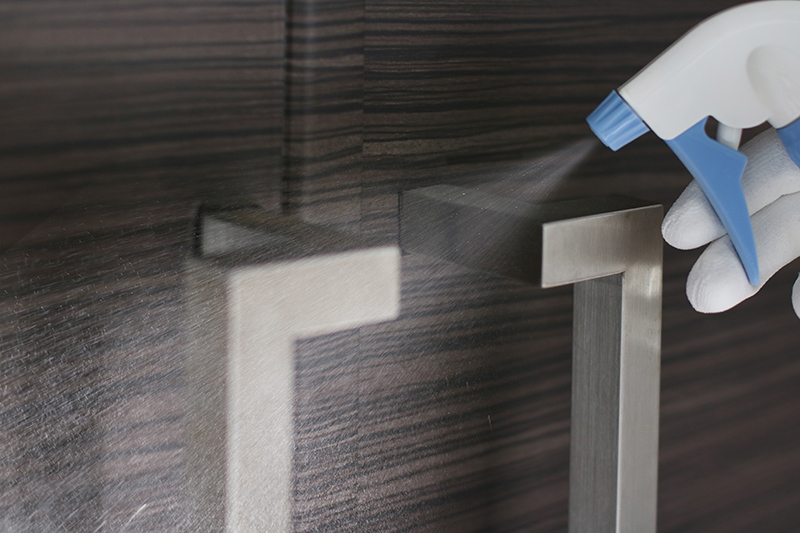As our world is changing in so many ways to adapt to the risks of the COVID-19 pandemic, our knowledge and understanding of the language used to communicate about professional cleaning requires clarification and definition.
As a facility manager, now more than ever, it’s important to know the differences between cleaning, disinfecting, sanitizing and sterilizing—because these terms have specific meanings and their implementation produces different levels of health and safety protection in your workplace.
As a commercial cleaning company with more than 70 years of experience, all ServiceMaster Clean cleaning staff and technicians know the differences in cleaning terminology and the products, methods and procedures required to achieve clean, safe and healthy work environments.
To help you communicate effectively with your commercial cleaning providers and help prevent the spread of infectious disease at your facility, the following are definitions for key cleaning terms as outlined by Public Health Canada and the U.S. Center for Disease Control (CDC):
Cleaning is defined as using soap (or detergent) and water to physically remove visible dirt and impurities from surfaces or objects. This process does not necessarily kill germs, but by removing them, it lowers their numbers and the risk of infection.
Disinfecting kills germs on surfaces or objects through the use of chemical products. The disinfection process does not necessarily clean dirty surfaces, but by killing germs on a surface after cleaning, disinfection can further lower the risk of spreading infection.
Sanitizing means reducing the number of germs and microorganisms on surfaces or objects to a safe level as defined by public health standards or requirements. Sanitizing is performed after cleaning, by disinfecting surfaces or objects to an approved level that further lowers the risk of spreading infection.
Sterilizing
Sterilizing involves the use of high levels of heat, chemicals or other procedures to remove all microorganisms including bacteria, viruses, spores and fungi, from surfaces or objects. Sterilizing is rarely required or performed outside of healthcare setting such as hospital operating rooms.
In summary, if done properly, cleaning and disinfecting procedures will produce sanitary results. At ServiceMaster Clean, our professional commercial cleaners are experts in creating clean, safe and healthy work environments. We have the experience and resources to help maintain and promote safe practices for infection prevention within all businesses.
ServiceMaster Clean is aligned with Health Canada recommendations and employs preventive cleaning and disinfecting processes and procedures to respond to all types of infectious disease contagions, including COVID-191.
Our locally owned ServiceMaster Clean team can help your business implement effective cleaning, disinfecting and sanitizing protocols to help prevent outbreak and spread of infectious disease. Please call to let us be of service.
1 Human coronaviruses can remain infectious on inanimate surfaces at room temperature for up to 9 days. At a temperature of 30°C [86°F] or more, the duration of persistence is shorter. Veterinary coronaviruses have been shown to persist even longer for 28 days.
https://www.medicalnewstoday.com/articles/coronaviruses-how-long-can-they-survive-on-surfaces
DISCLAIMER - COVID-19 is an emerging pathogen and new information becomes available on a regular basis. The information presented here is based on reports available at the time this article was written, in May 2020, and is derived from several sources including the U.S. Center for Disease Control, World Health Organization, Health Canada and other sources. The information contained in this article may be updated at any point by the organizations mentioned herein. It is the responsibility of every business to stay current on new information regarding COVID-19 as it emerges. This article should not be construed to be the totality of all information available on COVID-19.
